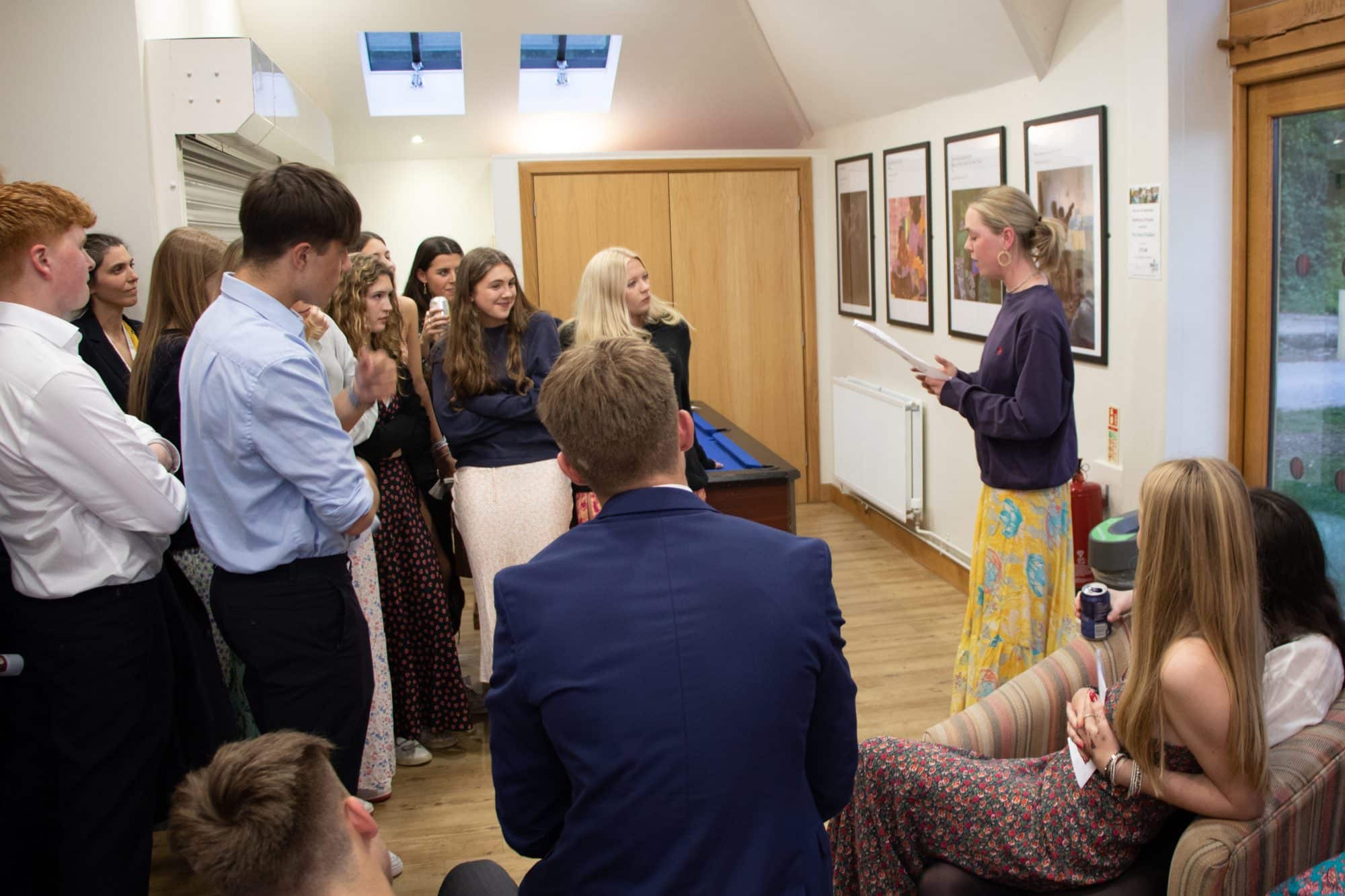Another important theme was black histories which featured Faith Ringgold’s The Flag is Bleeding, 1997. In her research of the piece, Bella (M) found that the painting holds personal significance to the artist whilst also encouraging the viewer to understand the trauma and hardships black people experienced and continue to withstand. Ringgold deliberately used an American flag to convey her political stance and to create a powerful and poignant message to provoke the viewer in to seeing the harsh reality of American slavery.
The exhibition also explored the meaningful themes of conflict and tension, visible in Shaquille-Aaron Keith’s Come to London, You Won’t Get In (The Bubble Effect), 2020. Jed (C), who put forward the piece for the exhibition, shared that the artist is telling stories for people who don’t have space to articulate their own. The image is a reflection from the depths of the pandemic with Keith touching on the experience of being a young black artist trying to make it when he wasn’t in the right ‘bubble’ or didn’t know the right people. He wanted to express the injustice of not everyone having a fair start in this world, particularly in London.
Re-imagining Western ideas is clear to see through Jean– Michel Basquiat’s Red Kings, 1981, put forward for the exhibition by Tilly. The painting holds great importance to Basquiat as it portrays his ambition to be considered a great artist and challenges Western histories by depicting black men as Kings. It is believed that this painting represents both Basquiat and Pablo Picasso. Tilly shared more of her research, stating: “Perhaps he is comparing his ability to Picasso to emphasise his belief that black men are also Kings, which is a recurrent motif in most of his artwork. The red colour pallet used and the name of Red Kings may symbolise danger and warning and its simple composition has a deeper meaning because a black person being characterised as a King was an unpopular concept in history and at the time the work was created.”
Another prominent theme was music, particularly in Denzel Forrester’s Dub Strobe 1, 1990. Another History of Art pupil Tilly (M) put forward this work, finding that Forrester reminisces on how the East London clubs provided escape from the harsh reality of racial prejudice for himself and others, racial prejudice, which they experienced daily from the public and police force, for himself and others. The painting also conveys the strength of the black community as they come together through the injustice they experience.






